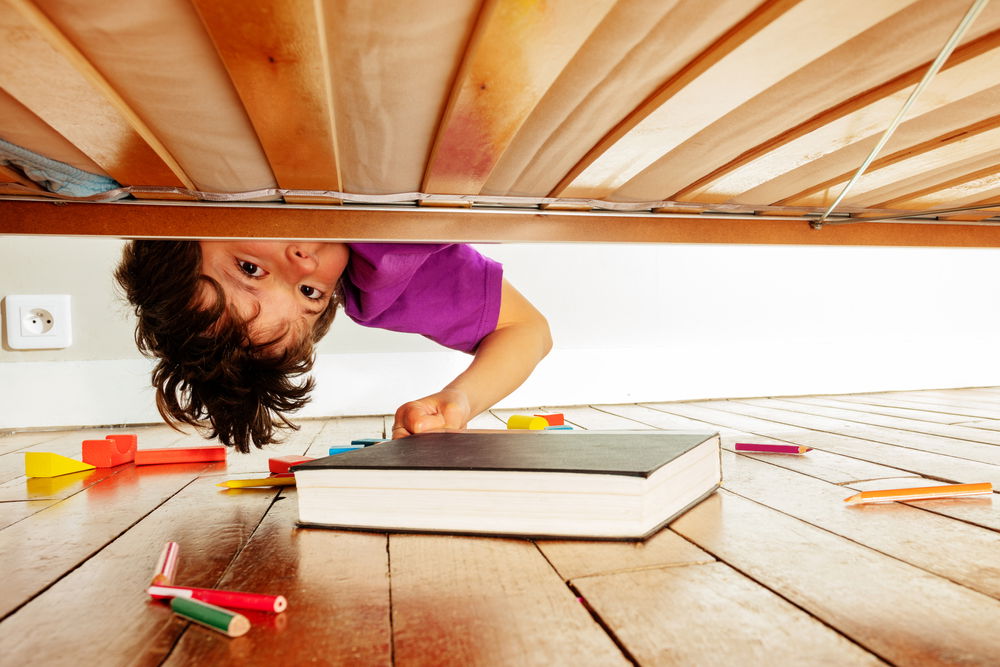Highlights
Like every cultural group, Americans have their own approach to raising children. As I argued in my last post, despite all of the extra work and fatigue involved, we cultivate our youngest children’s sense of themselves as uniquely expressive rights-bearing individuals with their own pronounced and valuable preferences.
Just about everyone has rolled their eyes at the excesses that often accompany this practice. The other day I happened across a father walking his six- or seven-year-old daughter to school in my Brooklyn neighborhood. “Do you want to go down Union Street?” he asked her. “Or Berkeley? Or Lincoln?” The child stopped short, frozen by a choice she clearly had never considered and about which she had no opinion. “Hurry up, we’ll be late,” he urged. More silence, punctuated by small, furrowed brows. Finally, he took her hand and tried to move on. At that point she shouted with the passion of a true believer, “No! Not Union!”
It would be easy enough to go on with stories like this—and far, far worse! —but instead let’s consider the possibility that there is a method to American parental madness, that when we give them myriad choices and stoke their self-esteem, we are trying to shape our kids to thrive in a society and an economy that prize smarts, individual enterprise, and, let’s not forget, happiness.
The training begins as early as the womb, when the most diligent parents-to-be begin “sonic stimulation” by playing the supposedly brain-enhancing music of Mozart and Beethoven. (Check out this app for “Pregnancy Music Radio.”) After birth, parents stimulate their baby’s brains by lining their cribs with black and white graphics (since babies don’t see colors or intricate patterns), plastic mirrors (since babies like to look at faces), stuffed animals, and musical mobiles.
Preparing their kids for the competition that is American life, parents organize their days as well as their homes around individual enrichment.
Trying to arouse as much of our children’s potential as we can, we buy trikes and stacking toys to develop their gross and small motor skills, puzzles and computer games to challenge their problem-solving skills, and an army of dolls and figurines to stimulate their imaginations. American visitors to Scandinavia are sometimes surprised by homes where a single white tulip sits in a simple vase exquisitely perched on a clean white table unperturbed by the Legos, plastic dinosaurs, Barbie stilettos, and hardened play dough that turn the American living room into a colorful, but mildly toxic landfill. “Where [is…] the giant pink Barbie Dreamhouse? The snaking tracks of Thomas the Tank Engine?” wonders Brigid Schulte in her recent book Overwhelmed, a title that refers to the current mental state of American working mothers, when she visits a Danish family. No surprise, really: middle-class American parents see their homes as their children’s cognitive training camp; Scandinavians don’t think that way.
Preparing their kids for the competition that is American life, parents organize their days as well as their homes around individual enrichment. In one of their numerous studies comparing American and European parents, University of Connecticut cross-cultural psychologists Sara Harkness and Charles Super interviewed parents in seven cultures about a single day in their lives with their young children. A Boston mother who had taken a day off from work to spend with her three-year-old daughter took her to a local production of Pinocchio in the morning; in the afternoon they went to a swimming lesson. Both the mother and her husband spoke of the importance of “special” or “quality time” that they spend one-on-one with each of their two children.
Parents from other cultures didn’t talk that way. A Dutch mother, for instance, arranges things so her daughter is “entirely in the familiar settings of home, neighborhood, and pre-school” with no special activities and only casual individualized attention. Americans preferred to “focus exclusively on the needs and developmental capacities of one child at a time,” they write. Dutch adults, by contrast, incorporated the child into their domestic routine. They “waxed eloquent” about the importance of family dinners, not special mommy-daughter time.
Similarly, American parents talk much more about their children’s cognitive abilities than other Western mothers and fathers. When Harkness and Super asked parents of different cultures to describe their children, Americans were the most likely to say “intelligent” and “cognitively advanced”; “asks questions” was part of the same package. (They also more frequently cited “independent” and “rebellious.”) Dutch parents referred to their kids as “agreeable” and “regular” in their habits. They saw “asks questions” in a less positive light, linking it with “seeks attention,” an association made by Swedish parents as well. The Swedish answers “suggest a cultural model of the child as both pleasant and undemanding” and definitely not “rebellious.”
A meritocratic knowledge economy has upped the stakes for middle-class parents.
These tics of American parenting are not new; even in the nineteenth century, liberal thinkers like the activist Lydia Child were recommending “cultivating…all the faculties of a child’s mind.” But a meritocratic knowledge economy and a fad-driven popular media have upped the stakes for middle-class parents and added a corrosive level of competitive anxiety. In All Joy and No Fun, Jennifer Senior found a number of parents who tied their own helicoptering to Thomas Friedman’s warning that Americans are now competing with the young grinds of China and India.
And even if it’s true, as experts tell us, that middle-class children tend to become middle-class adults, how do we know that isn’t because of all of the math tutors and violin lessons? According to time use studies, as American mothers have increased their hours in the workforce, they’ve found ways to spend more time with their kids than previous generations did. Given the requirements of a global economy, they may have to.
This may sound like Americans are becoming like stereotypical Asian Tiger parents, but there’s an important difference. Americans are as keen on pursuing individual happiness as economic success, and their hope is that their children will figure out how to find both at the same time. “Find your passion,” goes a popular mantra. If their eight-year-old loves acting, they’ll manage—somehow—to get her to classes in the next town even though it means skipping dinner two times a week. They’ll take her to auditions, help her memorize lines, take her to movies and bring her books about the thespian life. They’ll go to her performances and clap their hands off. They know it’s unlikely she’ll become the next Meryl Streep. But she loves it, and, well, even if someday she gives up on the dream and becomes an accountant, her passion has been ignited. And like most Americans, I wager that’s a good thing.
















